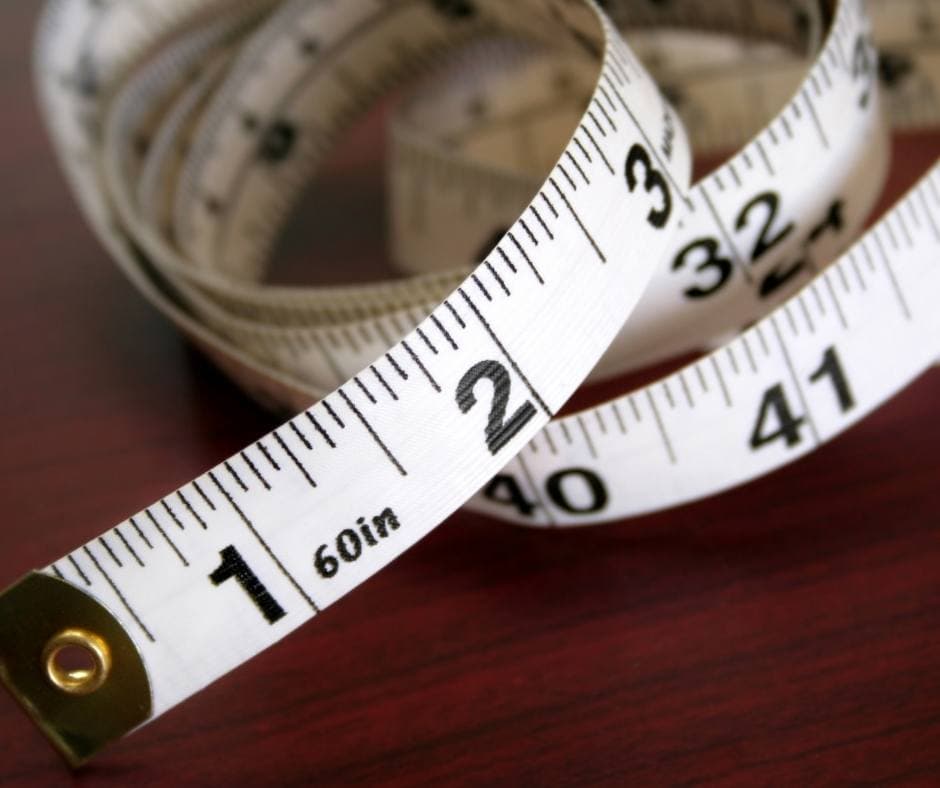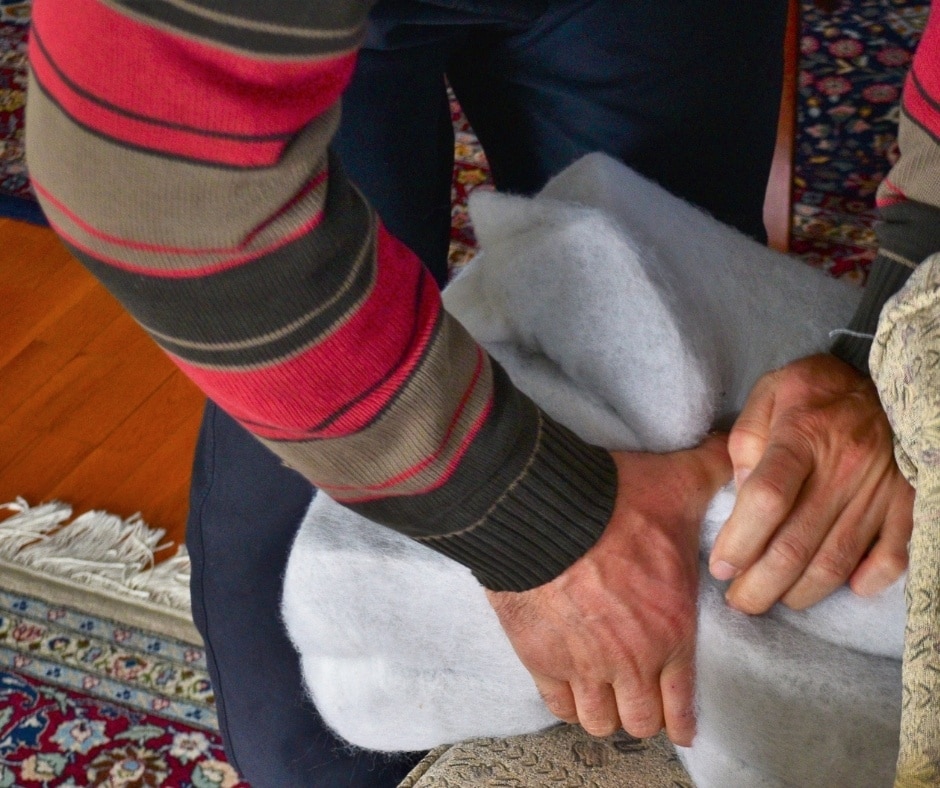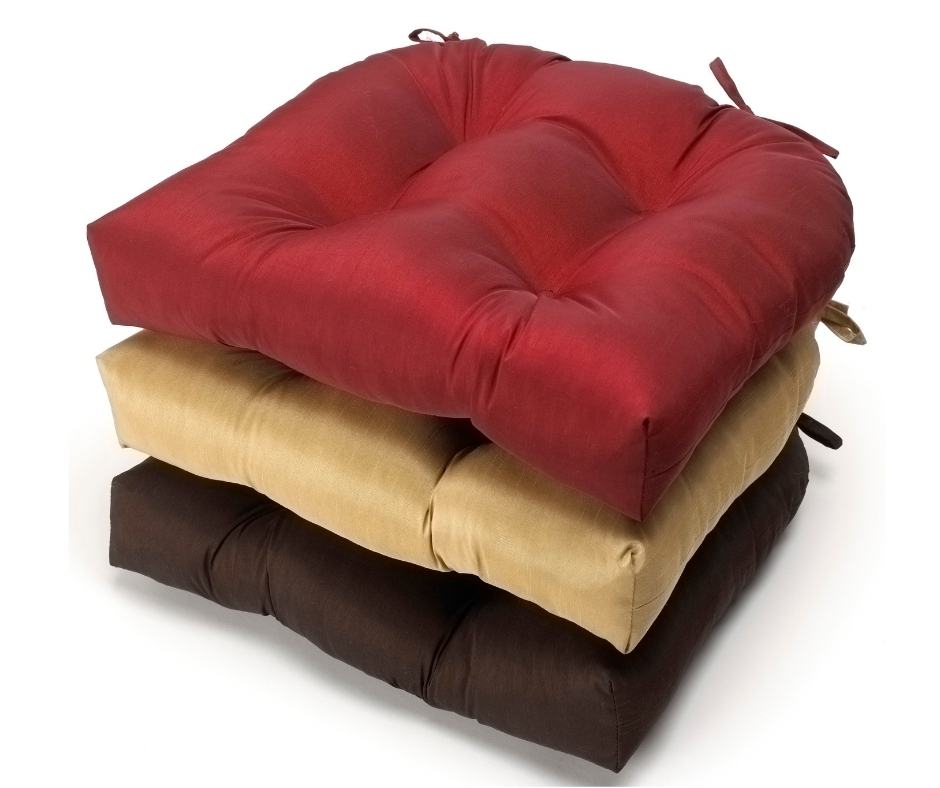As your recliner gets more use, the padding will get compressed. This is especially the case if you sit in the chair for long periods.
When this happens, you’ll have a few choices. You can either add an external cushion, you can replace the cushion, or you can add padding. Adding padding is usually the cheapest. It also has the benefit where you won’t need to match a new cushion to your recliner’s color scheme.
We went and looked at how to add padding, and whether it’s the right choice for you. Hopefully, this helps you make a smart decision.
In This Article We'll Discuss
Step-by-Step Instructions to Add Padding to a Recliner

It’s not difficult to add padding to a recliner cushion. This is especially the case if your recliner cushions have a zipper.
For cushions, the trick is getting the right measurement for the padding.
First, measure from the top of the cushion to the bottom to find out how thick your padding needs to be. Also, measure the width and length to produce a three-dimensional set of measurements.
Get the right kind of padding. If you have an owner’s manual for your recliner, it will probably tell you what kind of padding it came with. You can also contact a local chair repair professional for guidance.
You might also find that you can get by with just some supplemental padding that you lay over the top of what is already in your chair cushion. If it’s lumpy, however, you’ll probably just want to replace it.
If your recliner cushion has a zipper, unzip it and remove the old padding. If your recliner doesn’t have a zipper, using a seam ripper or a small knife to cut a seam either on the bottom or in the back where no one will see it. Remove the padding.
Replace it with the new padding and either zip the cushion shut or stitch the seam back together. Place it back on the chair.
What are the best foams or stuffings to use for a recliner?

The question of what is the best material to fill a recliner cushion comes down to what kind of material was originally in the cushion and whether you have special medical needs to consider.
Most furniture cushions are filled with foam padding these days.
Your owner’s guide will probably have information about what kind of filler was originally used in your recliner cushion. There might have been a reason why the chair’s manufacturer chose that material.
Occasionally, you might be able to fit an insert over the top of slightly compressed padding.
If you have specific medical needs, your doctor might suggest a firmer foam padding for your recliner. You’ll want to balance that recommendation with comfort. If your recliner cushion is too firm it might be uncomfortable.
How much does it cost to add padding to a recliner?
We don’t like to say that something will cost what you want it to cost, because that’s not much of an answer. There is an element of truth to it, however.
You can get replacement foam for a recliner cushion pretty cheaply. It’s just that it isn’t going to be very good. The more you spend, the higher the quality.
On the flip side, the higher the quality the more durable it is likely to be, too. So, you might slap down ten bucks for a cheap replacement foam only to have it fail in a couple of years. Then you pay another ten bucks for another couple of years.
Meanwhile, if you’d spent $25, it might last three times as long. In the long run, spending more upfront wound up being less expensive.
Finally, consider your own labor as having value. If you work for an hourly wage, you already understand that your time has a monetary value to it. If you spend eight hours replacing recliner cushion padding, that’s the same as spending a full workday.
Should you restuff your recliner seat or just purchase an external seat cushion?

The question of whether to repair or replace a piece of furniture isn’t all that complicated. It boils down to whether it is worth the time and work to repair it, or whether it’s just simpler, cheaper, and preferable to replace it.
On the pro side, restuffing a recliner seat yourself will save you money. Filler material isn’t all that expensive and you don’t need to pay for labor. If the recliner has sentimental value, you’ll also probably want to hang onto it.
Something else to consider is that your recliner cushion has faded at the same rate as the rest of the chair. It will be very difficult to find a cushion that doesn’t look like it isn’t a precise match.
If restuffing the seat would pose a real challenge, say it doesn’t have a zipper and you aren’t confident in your sewing skills, you might prefer to just get a new external seat cushion. Restuffing a recliner seat can eat a lot of time, also.
You’ll also want to consider the age of your recliner. If it’s getting pretty close to its last legs, you might just conclude that you’ll spend time and money in the next few months and spare yourself the hassle of repairing it.
Conclusion
A compressed cushion can take a lot of enjoyment out of your recliner, especially if it’s lumpy or hard. The good news is that you don’t need to get rid of your recliner. You have options.
One of them is as simple as adding more padding. It’s the cheapest, plus you won’t have to worry about a mismatched recliner and cushion.
We took a look at how to do it and whether it’s always the smartest thing to do, and we put it into this guide. If you found it helpful or you just have another tip, we’d love to hear it in a comment. You can also share it on your social media networks. You never know who has a lumpy chair at home.

